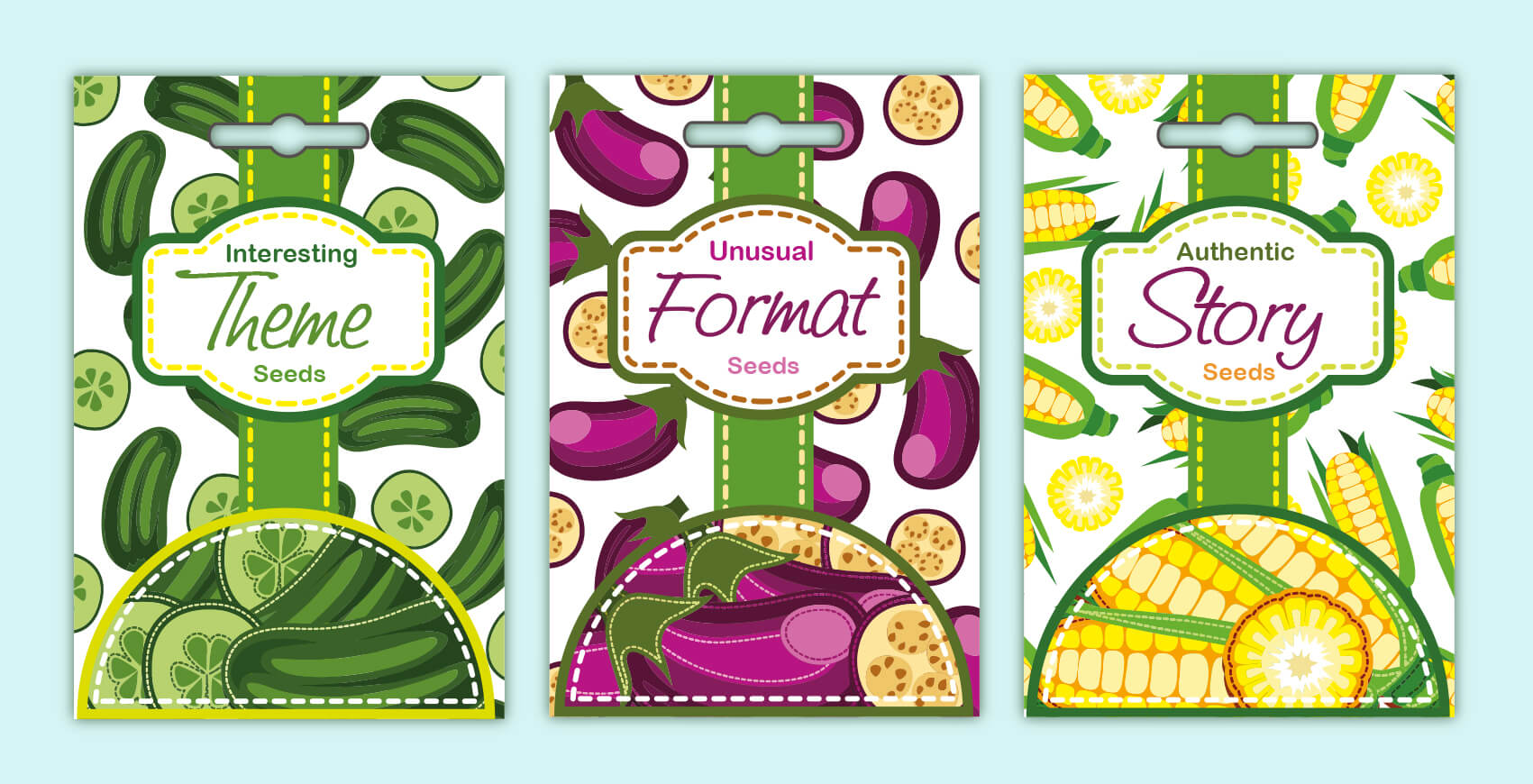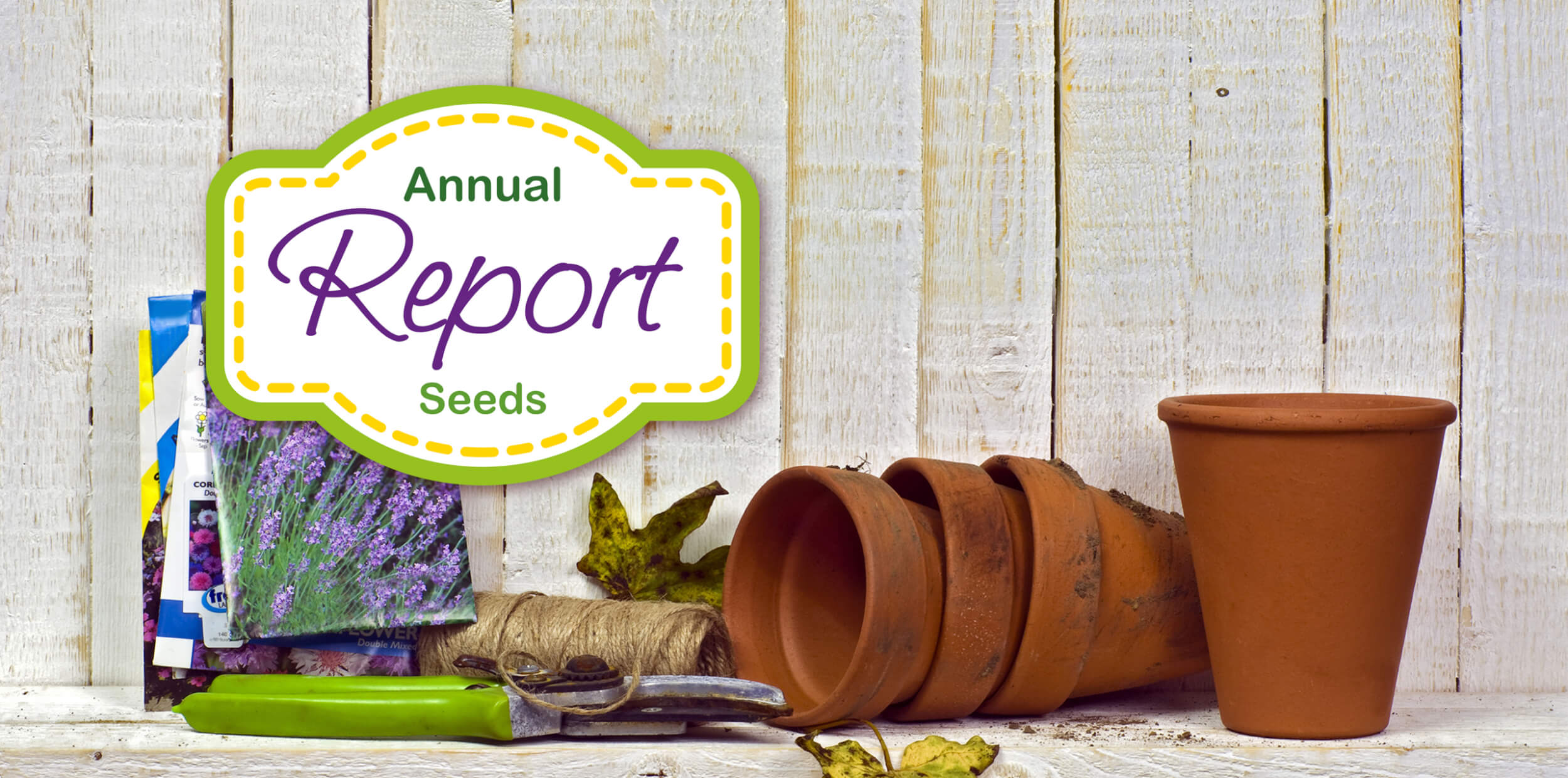March 3 2021
Tags:
Share:
This weekend was spent preparing the garden for spring. With the sun making a welcomed appearance and snowdrops appearing, it made us start thinking about annual reports… let us explain why:
In gardening terms an annual report is the corporate equivalent of an annual plant or bloom: the report documents the cycle of one full year (or growing season). It shouldn’t be mistaken for a perennial which has a much longer growing cycle – that’s what a strategic review or five-year-planning document should do.
Annual plants put all of their energy into developing flowers for one season, the same way an annual report should concentrate its activity on showcasing the year. An annual ‘bloom’ of information and reporting.
Mixed borders or ways to make your report stand out
A lot of charities don’t fully embrace the idea of the annual review as an innovative communication tool.
You may have brand guidelines in place and formats for standard documents but this doesn’t mean the annual report needs to follow this styling. What defined the year, was there anything that really stood out? Was there a particular word, feeling, event or challenge that you could base the story of your year around and create a theme? An initial open discussion at the start can often spark a creative direction of travel. As a document that ultimately needs to prove the success of the charity, it can be a daunting task to get information from the different parts of the organisation to summarise the year. Everyone often has a different emphasis and priority but if you’re able to provide a theme it provides focus and context.

Think of your approach as like creating a well-structured mixed border: planting together a wider context of project updates, where you are in a organisational plan, goals and insights can provide a wonderful assortment of rich information that should keep the reader engaged and wanting to find out more. The definition and summary of the year can look at the ‘blooms’ and successes of the last 12 months, but taking the mixed border approach adds interest and variety and covers all ground.
There is a huge opportunity to do something unique to make an organisation stand out by being creative – with both budget and the project itself. High impact doesn’t have to mean high budget.
We love the annual accounts from Dogs Trust, which takes the format of a menu. Although it’s a lengthy document, it’s easy to navigate, vibrant in colour and includes lots of fantastic imagery.
Other favourites include the annual review calendar from Quarriers which doubles up as a calendar to encourage the user to interact with it and keep it for a year. The Wallich distill theirs into four pages. Another example is the Brain Tumour Charity who send out coffee with their small-format annual report brochure, encouraging the recipient to take some time to enjoy the information.
Even good gardens have weeds
It’s an accepted fact in a garden that you’ll always have to deal with some weeds or the occasional slug. But one person’s weed is another’s flower.
Kate Sayer, Director of Integrity and Ethics at Oxfam, sums up the importance of sharing the bad along with the good: “Charity trustees produce annual reports, which are an important way for charities to communicate to their stakeholders. However, many people find these reports dull and uninformative.” She goes on to say “It would be better if all charities were more transparent about failings and problems…”
A great example of this is the impact and accountability report from Clic Sargent, which went as far as having three clear sections, entitled ‘The Good’, ‘The Bad’ and ‘The Ugly’, where they celebrated their wins, but openly acknowledged their mistakes, outlining what they’d learned from them.
This approach wouldn’t be for everyone, but showing successes alongside challenges and disappointments reveals honesty, perseverance and where the organisation is able to learn and grow. It shows how hardy the organisation is, tolerating different weathers or pressures.
Our client Look Ahead’s annual review this year had to address the challenge of responding to the sudden change in direction brought about by Covid-19. They needed to rapidly diversify whilst still retaining their core values. Not only was it not business as usual across any of their services, but access to information, photography and staff time was restricted. Their year became centered around ‘protecting’ their communities more than ever. We helped the communications team to present this in an authentic way, creating the theme based around ‘home’. With housing at the heart of what Look Ahead provides, it was the perfect opportunity to show the different meanings ‘home’ has to everyone. It was also very apt in the current environment to be able convey the importance of the support and protection that ‘home’ provides.
Here at Door 22, we really enjoy collaborating with our clients to meet the perennial challenge of creating impactful and innovative annual reviews. We can help you navigate the planning and execution, whether that’s sowing the seeds for a theme or helping you to create a wonderful document full of colour, interest, structure and form, light and shade.
Things to consider to cultivate and innovate your annual review:
- Format, shape, size and length
- Think about a theme, and what made the year unique
- Don’t shy away from the weeds
- Create mixed borders to create interest
If you’d like to have a chat about how we could help you cultivate your annual report, please do get in touch. We’d love to discuss some ideas with you.



